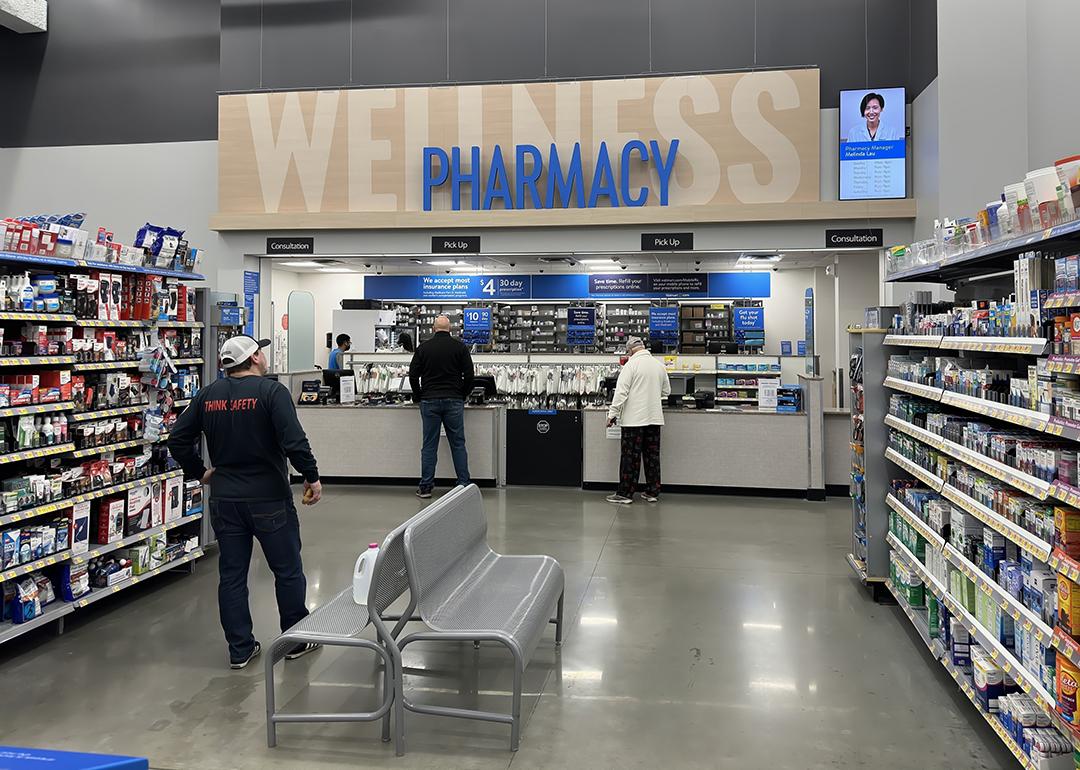
State of Medicare heading into 2026: Your complete guide to new laws and avoiding surprise bills
State of Medicare heading into 2026: Your complete guide to new laws and avoiding surprise bills
Prescription drug costs have long been one of the biggest financial burdens for Americans, but relief may be on the horizon for many. Starting in 2026, Medicare will fully implement a $2,000 annual cap on out-of-pocket drug spending. This is a landmark change baked within the Inflation Reduction Act, potentially offering reprieve to millions around the country.
However, this new rule comes with certain nuances, including how the cap is calculated, meaning you might accidentally run into surprise bills if you aren’t careful. QMedic analyzed data from sources including MedicareRights, the AARP, Humana to break down how your cap will be calculated, whether or not you qualify, and what to do during open enrollment to ensure you receive your benefit in 2026.
Understanding the $2,000 cap: What it really means
Under the new law, out-of-pocket spending for Medicare Part D prescription drugs will be capped at $2,000 per year. This began in 2025, but plan adjustments will carry into 2026. Once you have spent up to $2,000 on the amount of covered drugs, Medicare and your plan will contribute to cover the rest for the remainder of the year.
The AARP made note of how this new $2,000 cap is meant to replace the previous catastrophic coverage phase, which resulted in enrollees still paying 5% of their drug costs after reaching a certain threshold. Under this new policy, that 5% additional payment is wiped out entirely. The change will apply to all Medicare Part D prescription plans, regardless of whether you get coverage through a standalone plan or through a Medicare Advantage plan.
Important calculations: Why you might pay less than $2,000
It’s worth noting that not everyone will hit the full $2,000 during the course of the year. The actual amount you spend out-of-pocket will depend on your plan’s specific copays, coinsurance, and your eligibility for Extra Help, the low-income subsidy program. Additionally, manufacturer discounts and plan payments may count towards your out-of-pocket total.
Real-world drug cost scenarios: What to expect at the pharmacy
To gain a better understanding of how this could play out in your daily life, let’s take a deeper dive into some realistic theoretical examples:
Scenario 1: High-cost specialty medication starting in January
Imagine you were to begin treatment in January with a high-cost specialty drug that costs $1,500 per month and is included in Part D. Under the rules in 2026, you would most likely reach your $2,000 out-of-pocket maximum in February or March, causing your copay to drop to $0 for the remainder of the year.
Under the old system, you would have continued to pay a 5% share, resulting in potentially hundreds or thousands more. This is especially impactful for those who need to take high-cost medicines for chronic conditions such as cancer, multiple sclerosis, or rheumatoid arthritis.
Scenario 2: Multiple medications with moderate costs
Now, think about someone who needs five prescriptions that collectively cost about $300 a month. Over a 12-month period, this would amount to $3,600 in total drug costs, but your out-of-pocket portion might only reach $1,200-$1,800. While you wouldn’t necessarily hit the $2,000 ceiling, you would still benefit from reduced copays and predictable spending thanks to the new smoothing program.
Scenario 3: Starting treatment midyear (August)
The final scenario comes into play if you start an expensive medication in the middle of the year. Say you begin a $2,000-per-month therapy in August. Before year’s end, you would likely hit the out-of-pocket limit after just one or two refills, then owe nothing through the remainder of the year. This is meant to protect new patients from high costs too, ensuring they are treated fairly on cost regardless of when treatment began.
The medicare prescription payment plan (M3P): Monthly "smoothing" explained
There is another aspect to this $2,000 cap proposal that comes into play: the Medicare Prescription Payment Plan (M3P). This further helps enrollees to reduce costs by adjusting payment frequencies. Drug costs can be spread out over the year instead of paying large lump sums right at the counter. Your pharmacy simply makes note of each prescription you fill, but rather than needing to fulfill your total copay immediately, your drug plan bills you monthly for a portion of the costs.
This “smoothing” process can help make your monthly spending more predictable and reduce the burden of a huge lump sum payment.
Who benefits from M3P
The smoothing plan benefits people who primarily:
- Take expensive brand-name or specialty medications
- Experience high seasonal or front-loaded drug costs
- Prefer predictable monthly budgeting
If your out-of-pocket spending would normally hit $2,000 by March, for instance, the M3P would spread that cost into 12 monthly payments of about $166.
Who should skip M3P
Alternately, the Medicare Rights Center outlines that those with stable monthly costs or those who have high costs in the latter part of the year should consider skipping. Also be aware of the fact that if you disenroll or switch plans midyear, then you will still owe any outstanding M3P balances to your old plan.
How to enroll in M3P
Enrollment in M3P begins when open enrollment starts, so you’ll typically sign up through your Part D or Medicare Advantage plan’s website or via phone. Participation is voluntary, but if you choose to enroll, then you will see your remaining balance for the year, your amount due that month, and any progress you’ve made towards the $2,000 cap.
Open enrollment action plan: Steps to avoid surprise bills
The key way to maximize your savings in the coming year is to make smart choices during the annual open enrollment period, which has already begun. Typically starting on October 15 and running through December 7, there are some critical dates to be aware of.
Critical dates for Medicare open enrollment
- October 15, 2025: Open Enrollment begins
- December 7, 2025: Last day to enroll or change plans
- January 1, 2026: New coverage takes effect
Be aware that missing the above window will mean you are locked into your current plan and will miss out on lower drug costs or better formula coverages.
Step-by-step checklist for beneficiaries
Making sure you’re enhancing your plan for 2026 requires following a few key steps:
- Review your current medications and costs: Look at your 2025 drug list and total out-of-pocket expenses, making note of any high-cost medications that might push you toward the cap.
- Check your plan's 2026 formulary: Drug formularies, which is the list of covered medications, can change each year, so verify that your prescriptions remain covered and check for any new prior authorization requirements.
- Compare plans using Medicare Plan Finder: Use the official Medicare Plan Finder to compare costs, premiums, and coverage options for 2026.
- Evaluate whether M3P makes sense for you: Consider your spending patterns. If you routinely face high costs early in the year, then M3P may offer much-needed flexibility.
- Enroll or make changes during open enrollment: Don’t wait until the last minute. Enroll in your chosen plan or make adjustments before December 7 to ensure that your new coverage takes effect in January.
Additional considerations to avoid surprise costs
The last thing anyone wants is surprise expenses, which is why it’s important to also take some additional considerations into account. Always confirm that your pharmacy is in-network for your plan. Additionally, ask your provider if generic or lower-tier alternatives for your drug options are available. You should also watch for any premium changes, as the $2,000 cap doesn’t affect your monthly premiums.
Special considerations for caregivers and family members
If you are helping take care of someone and managing their medications, developing an understanding of the Medicare landscape for 2026 is crucial.
Helping seniors navigate the changes
Many older adults rely on their adult children or caregivers to help manage their Medicare paperwork. Encourage your loved one to review their plan materials as early as possible, so that you can assist them with enrolling when the time comes. Also, offer to help compare different costs with the Plan Finder tool.
Financial planning tips
Since out-of-pocket expenses will be capped and potentially spread out monthly, you can better predict your annual healthcare spending. Aim to set aside a small monthly budget for medications or coordinate with automatic payments through the M3P to help prevent missed bills or late fees.
Communication with healthcare providers
Finally, encourage open communication between any doctors or pharmacists involved with your loved one or the person you’re caring for. Ask whether there are any upcoming medication changes that could affect costs or potentially trigger coverage reviews. Providers can also help to identify covered alternatives or patient assistance programs.
Financial assistance programs: Extra help for those who qualify
In some cases, additional financial assistance may be necessary even with the $2,000 cap implemented. Luckily, there are a couple of options that can help:
Extra Help (Low-Income Subsidy) Program
The Extra Help program, alternatively known as the Low-Income Subsidy program, continues to provide major assistance to people who have limited income or resources. It can lower or eliminate premiums, deductibles, and copays. In some cases, this can result in your out-of-pocket costs being below $2,000 even before the cap applies. To qualify, your monthly income must not exceed $1,903 if you are an individual and $2,575 if you are applying as a couple.
Other assistance options
Beyond the Extra Help program, you may potentially qualify for:
- State Pharmaceutical Assistance Programs (SPAPs)
- Nonprofit foundations that help with copays for certain diseases
- Manufacturer discount programs (though eligibility varies by income and plan type)
If you find yourself unsure of where to start to see your options, visit your State Health Insurance Assistance Program or the Medicare website directly to see about assistance with payments.
Common questions and misconceptions
When it comes to Medicare, and specifically the adjustment of the $2,000 cap, there are some common questions and misconceptions:
Myth vs. reality
- Myth: The $2,000 cap means you’ll never pay more than $2,000 for prescriptions.
Reality: The cap only applies to covered Part D drugs, meaning over-the-counter medications or drugs excluded from your plan’s formulary may still cost extra - Myth: All plans will work the same.
Reality: While the cap is universal, premiums, formularies, and pharmacy networks still vary widely by plan, so always compare before enrolling - Myth: You’ll automatically be enrolled in M3P.
Reality: Enrollment is optional, and you must actively sign up with your plan to use the monthly payment option
Payment and billing concerns
The most frequent questions regarding billing come from being enrolled in M3P. If you opt into the plan, you’ll receive monthly bills directly from your plan and not your pharmacy. It’s crucial to pay this on time so that you don’t lose access to the smoothing feature or, worse, fall behind on your owed amounts.
Taking control of your 2026 prescription costs
The new $2,000 Medicare drug cost cap will mark a historic shift towards a more predictable and affordable healthcare environment for millions of people. Combined with the optional Medicare Prescription Payment Plan, seniors and those taking Part D drugs alike can finally budget for prescription costs without fear of surprise bills. With 2026 fast approaching, ensure you are prepared by reviewing your medications, comparing different plans, and considering whether the smoothing plan fits your budget. This will allow you to take full advantage of financial protections and ensure next year’s prescriptions are the most manageable they’ve ever been.
This story was produced by QMedic and reviewed and distributed by Stacker.



